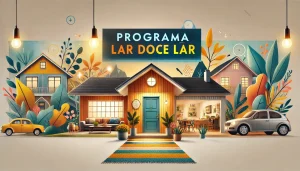Advertising
In recent years, interest in solar energy has grown significantly in Brazil, with many families looking for ways to reduce their electricity bills. One of the topics that often comes up in this scenario is the possibility of earning a solar energy kit free of charge, especially through government programs or private initiatives. But is this really possible? And, more importantly, how accessible are these opportunities to the population?
A solar energy kit consists of photovoltaic panels, inverters and other components needed to convert sunlight into usable electrical energy. It has the potential to generate significant long-term savings, making it an attractive option for consumers. However, the initial installation costs can be an obstacle for many. This is where questions arise about whether there are programs that offer solar energy kits for free or at subsidized prices.
In the following paragraphs, we'll explore how these initiatives work, whether it's possible to get a solar energy kit through government programs, and how these policies impact the lives of Brazilians in search of cheaper energy bills.
Government Programs: How to Win a Solar Kit in Brazil
Several state and municipal governments have developed policies to encourage the use of solar energy, aiming to reduce dependence on non-renewable energy sources and, at the same time, help families save on their electricity bills. However, do these programs really offer free solar energy kits?
In Brazil, the main incentives related to solar energy are based on subsidies, tax exemptions and low-interest credit lines. Programs such as My House, My Lifein some regions, have started to include the installation of solar panels on new properties. Although this doesn't necessarily mean "winning" a solar energy kitThis represents an opportunity for subsidized access for low-income families.
In addition, initiatives such as the State and Municipal Energy Development Program (PRODEEM) try to promote the expansion of solar energy in rural areas and isolated communities, where traditional electrification is more difficult. In some of these regions, the government offers solar energy kit as part of development projects, especially in locations far from conventional distribution networks.
How does the distribution of solar energy kits work?
The distribution of solar energy kits, especially through government programs, does not follow a single rule throughout the country. It varies according to each state's energy policy, as well as local infrastructure and development conditions. However, there are some common mechanisms adopted in most programs.
In practice, most of the incentives for installing solar energy kit involves a partnership between the government, private companies and financial institutions. The government generally grants tax exemptions or offers direct subsidies to reduce the cost of purchasing the kit. Supplier companies provide the technological and operational support, while public and private banks offer accessible lines of financing.
However, in some isolated regions, especially in the Amazon and the northeastern hinterland, the government has adopted rural electrification programs that include the free delivery of solar kits. This occurs mainly in communities without access to the electricity grid, where solar energy is a viable and sustainable alternative to meet local needs.
Criteria for Participating in Free Solar Energy Programs
Participation in free or subsidized solar energy programs depends on a series of criteria, which can vary according to the type of program and the location. However, some common criteria can be identified, such as:
- Family Income: Many solar energy kit The free programs are aimed at low-income families, generally those enrolled in the Federal Government's Single Registry for Social Programs (CadÚnico). This is the criterion used in projects such as My House, My Life.
- Geographic LocationRural electrification programs, such as PRODEEM, are mainly aimed at isolated areas and communities that do not have access to the conventional electricity grid. In these cases, geographical location is a determining factor for receiving the kits.
- Environmental ImpactIn some regions, the criteria also include the need to reduce the environmental impact caused by the use of polluting energy sources, such as diesel generators. Thus, communities in environmentally protected areas can be given priority in solar energy programs.
In addition, the application and approval process for government programs may involve analyzing documents that prove eligibility, such as proof of income and address. Although most programs do not directly offer a solar energy kit free for the urban population, there are substantial incentives that help make solar energy more accessible.
Impact of Solar Kits on Electricity Bill Reduction
The installation of a solar energy kit can generate significant savings on electricity bills, which is one of the main attractions for families looking for this alternative. When solar energy is installed, photovoltaic panels capture sunlight and convert it into electricity, reducing the amount of energy that needs to be purchased from the grid.
These savings can vary depending on the size of the system installed and the amount of sunshine available in the region. In many cases, consumers are able to reduce their electricity bills by up to 95%, especially in regions of the country with high solar incidence, such as the Northeast. In addition, there is the possibility of generating energy credits when the amount produced exceeds consumption, generating even more benefits.
Another advantage of solar energy kit is long-term stability. Unlike conventional electricity tariffs, which undergo frequent adjustments, solar energy offers a constant and predictable source of savings, especially after the initial installation costs have been amortized.
Tax Incentives and Government Subsidies for Solar Energy
The Brazilian government has implemented a series of tax incentives to promote the adoption of solar energy. These include tax exemptions such as the ICMS (Tax on the Circulation of Goods and Services) in some states, which is levied on the energy generated and consumed by the solar system itself.
In addition, there are specific lines of credit offered by banks such as the National Bank for Economic and Social Development (BNDES) and Caixa Econômica Federal, with special conditions for financing solar energy systems. These loans can cover both the purchase of the solar energy kit and installation costs, allowing consumers to pay in affordable installments.
Another important policy is the electricity compensation scheme, also known as "energy credits". When the solar system generates more energy than the consumer uses, the surplus is injected into the electricity grid, generating credits that can be used in subsequent months, providing even more savings.
The Future of Solar Energy in Brazil: Opportunities and Challenges
The future of solar energy in Brazil looks promising, driven by an increase in awareness of sustainability and government efforts to encourage the sector. However, there are still challenges to be overcome, especially in relation to universal access and reducing the initial costs of installing a solar plant. solar energy kit.
On the other hand, the outlook is encouraging, with the country taking advantage of its great solar potential, especially in the Northeast and Center-West regions. Technological innovations and growing competition in the market have contributed to a gradual reduction in costs, making solar energy increasingly accessible to Brazilian families.
However, it is crucial that the government continues to implement incentive policies, especially for low-income families and rural communities. Expanding financing programs and simplifying installation processes are measures that can further accelerate the adoption of this technology, ensuring that the benefits of solar energy are distributed more equitably across the country.
Conclusion
Although "winning" a solar energy kit is not yet a common reality for most Brazilians, there are several government programs that offer significant incentives to make solar energy more accessible. Through subsidies, tax exemptions and easier financing, many consumers are managing to install solar panels and substantially reduce their energy bills.
With the growing interest in renewable energy sources and the pressure to reduce environmental impact, the opportunities to access these kits are likely to increase in the coming years. The path to cheaper and more sustainable energy is increasingly open to Brazilians.
But you can get a big discount on your electricity if you are registered with CadÚnico, the government offers a discount on energy bills for people on low incomes. To find out more about how to register, just click on the following link: DISCOUNT ON ELECTRICITY



